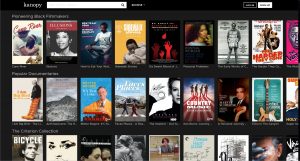Many people in an academic setting have heard of copyright, but if asked what it is, what it protects, and who it affects, not too many can fully respond. So, what is copyright and how does it affect our daily lives at TAMU-CC? Simply put, copyright is everywhere. From the materials used in a lecture, to the readings assigned for homework, to the research papers, art projects, and other works created for one’s job or class, copyrighted works are either used or created.
Copyright is a bundle of rights granted to creators of creative works that restrict the re-use of the work without express permission from the rights holder. However, there are exceptions to these restrictions, specifically for educational purposes. This is why instructors can use materials created by others for instructional purposes. Copyright exceptions are also why students and researchers can use works of others to build upon their knowledge in their own works. Because we not only use copyrighted works on campus, we also create them, it is a rather complicated and in-depth subject.
The purpose of copyright is to promote the progress of useful arts and science by protecting the exclusive rights of authors and inventors to benefit from their works of authorship. If you write a book, you want the rights to copy, sell, and otherwise distribute your work so that you get credit for your work, some recognition, and hopefully some money. Copyright gives these exclusive rights to authors. However, copyright has become more complicated due to the digital world in which we engage, as well as traditional academic publishing trying to adapt to the new digital world. Many times, when authors publish their work, their copyright is signed away to the publishing companies. As authors, there are ways to negotiate with publishing companies, such as including addendums to their author agreements or using a creative commons license.
As users of copyrighted works, either in the form of instructional materials or works for research and class assignments, we must follow copyright law. The best way to follow the law is to understand the law, including the exemptions specifically made for educators and research purposes.
Fair use is an exception to the exclusive rights of copyright holders, one that is often used for educational purposes. The fair use statute can be defined as a limited right to use copyrighted works without the copyright holder’s consent, usually under confined circumstances, for purposes such as education, research, news reporting, criticism, and commentary.
Fair use is a flexible exception, it was purposefully created by Congress to be used in a way where every use of a copyrighted work is a standalone situation and must be analyzed as such. The statute has four factors that should be used to evaluate whether a use of a copyrighted work could be considered a fair use.
- The purpose and character of the use, including whether such use is of a commercial nature or is for nonprofit educational purposes
- The nature of the copyrighted work
- The amount and substantiality of the portion used in relation to the copyrighted work as a whole
- The effect of the use upon the potential market for or value of the copyrighted work
This is a lot of information in a short post but hopefully you will have learned something new. If you want to learn more, you can read through the guide on copyright and fair use. Additionally, if you ever have questions about copyright, please contact us at LibraryCopyright@tamucc.edu
Photo attribution: “Copyright Wordle” by teachingsagittarian is licensed under CC BY-NC-SA 2.0


